The goal of the VISION project is to develop a video surveillance framework for smart cities, to be integrated into the FLAME platform, in order to provide a social and shared video surveillance tool to help people with disabilities (blind, with limited mobility, deaf people , elderly) who may need to be guided / supervised to ensure their safety in the city. VISION is made up of three architectural elements, in particular the DiMoVis platform, Tourist Eyes and Lying Person Recognition.
FLAME
VISION Project
VIdeo Surveillance
for Impaired persONs
Winner project
ARCHITECTURE
DiMoVis
Smart and flexible social video surveillance platform, when used on FLAME it becomes extremely scalable in terms of the number of devices in transmission and reception. Each user of the platform can easily share their video transmission device (e.g. webcam, IP cam, smartphone, tablet) by connecting it to the network (with Wi-Fi connection or via mobile network) and registering it on the DiMoVis platform via Android app or web portal . During registration, the user can manage access to their transmission device, specifying one or more profiles to restrict access to different groups of users. Each user, on the opposite side, via the same Android app or the same web portal, has a map of the area covered by the DiMoVis platform service (e.g. a smart city), with all the active rooms represented by green circles, as shown in Figure 2.
IPS element
L’Impaired Person Support element (elemento di supporto per persone con disabilità) incluso in DiMoViS mira a fornire supporto alle persone con disabilità che possono essere guidate a distanza da un parente o un amico (tramite guida remota via chiamata), ad esempio quando il disabile ha perso i suoi punti di riferimento spaziali o se lui / lei vuole raggiungere un posto sconosciuto. Più specificamente, una persona con disabilità che cammina in un’area coperta dal servizio VISION può richiedere una guida visiva remota. A tal fine, inizia una telefonata con la guida remota, informandolo della sua posizione approssimativa. Quindi la guida remota attiva l’app VISION e, navigando sulla mappa, seleziona tutte le telecamere disponibili nella zona in cui potrebbe essere la persona con disabilità. Quindi, guardando i flussi video ricevuti da queste telecamere, inizia a guidare la persona parlando al telefono con lui. La guida remota può seguire la persona durante il suo percorso attraverso diversi flussi video trasmessi da varie telecamere, continuando a fornire istruzioni fino a raggiungere il luogo desiderato.
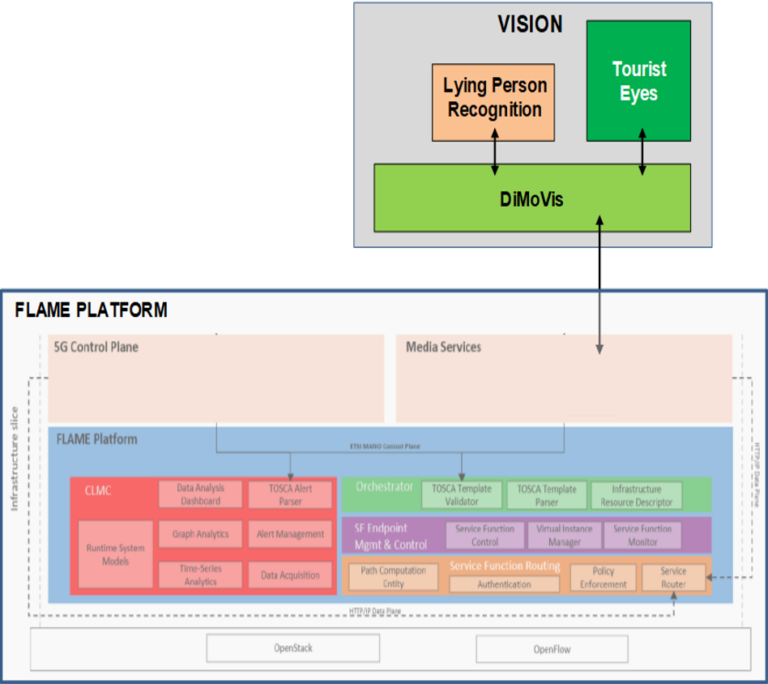
Figure 1. ViSiOn architecture and its interaction with the underlying FLAME platform
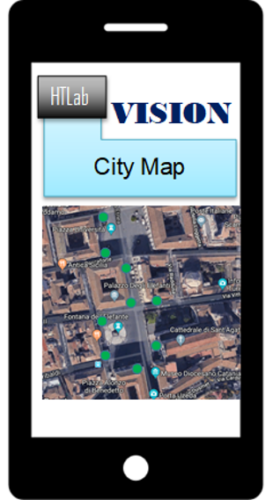
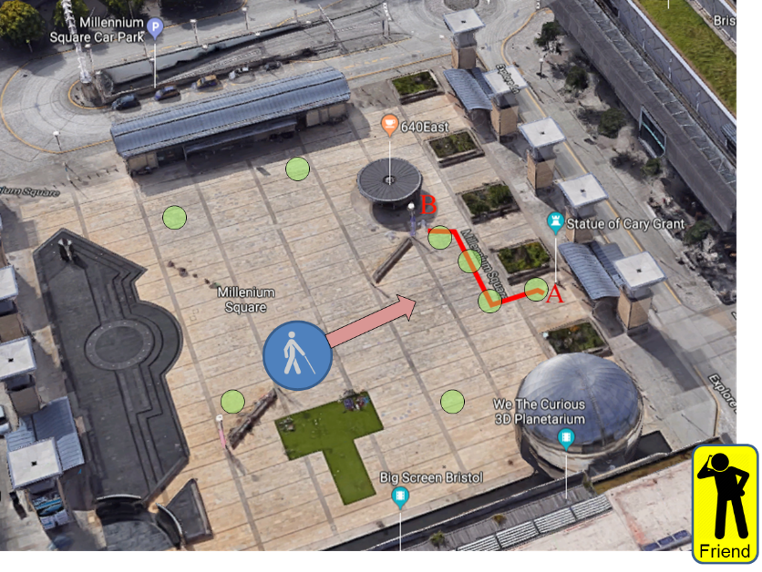
TWO DIMOVIS EXTENSIONS, INCLUDED IN THE VISION PLATFORM, ARE TOURIST EYES AND LYING PERSON RECOGNITION.
Tourist Eyes
The goal of Tourist Eyes is to provide visually impaired tourists visiting an intelligent city with a framework to support their activities, both indoors and outdoors. Therefore, the aim of this service is to use 5G compliant frameworks and IP cameras installed on predefined tourist routes to guide blind tourists to move around in smart cities. Blind tourists, through the voice commands managed by a smartphone app, require directions to reach some points of interest (PoI, Points of Interest) belonging to predefined routes, such as restaurants, toilets, museums, ATMs. So, blind tourists are localized by the system thanks to a wearable hat with a specific color and receive sound messages from Tourist Eyes through their smart device to follow the selected path.
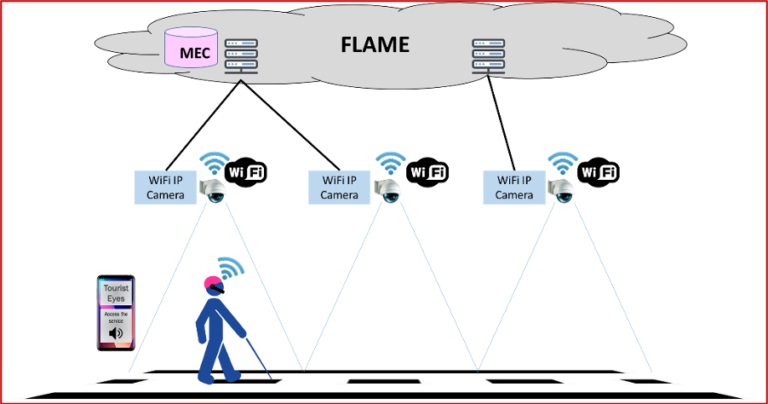
This service is complementary to the Tourist Eyes block, since it can be invoked when the tourist with disabilities is on a route registered in the Tourist Eyes platform and must reach a place not included in the PoI list or when he must reach a Tourist Eyes route from a outside place. All IP cameras installed for the Tourist Eyes service can be associated with the DiMoVis platform and therefore can be used by all the services it provides.
The Lying Person Recognition element , thanks to the cameras installed, can automatically recognize if a person is lying on the ground indoors or outdoors and send an alert to someone (for example a friend or relative of that person, to local emergency services or a healthcare professional). For example, this service can be activated by a relative of an elderly person who wishes to monitor it. In this case, the video streams generated by all the IP cameras installed near the places where the person with disabilities moves are sent to an artificial intelligence tool running within the network as a virtual function (VF), capable of to recognize people lying on the ground through an image recognition algorithm. If it happens that a person monitored through the Lying Person Recognition element is on the ground in an area controlled by a camera, an alert will be sent to the relative who requested to monitor him.
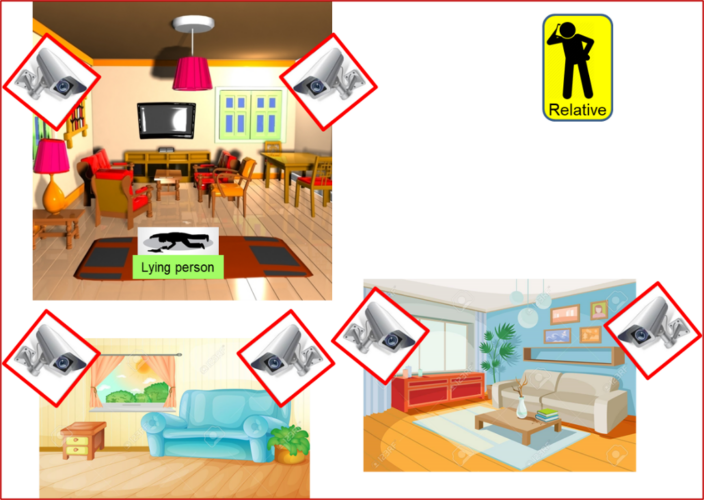
The VISION platform is completed with external devices, represented by the IP cameras provided by the user and by mobile devices, both connected via WiFi to the FLAME platform. Video sources are made up of any type of video transmission device, such as IP cameras, action cameras, cameras installed on board drones, etc. In the experiment, to comply with the rest of the platform, WiFi IP cameras were used that transmit streams based on HTTP or, alternatively, any type of cameras whose streams are transcoded in this format with software running on a Raspberry board More connected to the IP camera. Mobile devices, on the other hand, are Android smartphones or tablets on which the VISION app will be installed.


